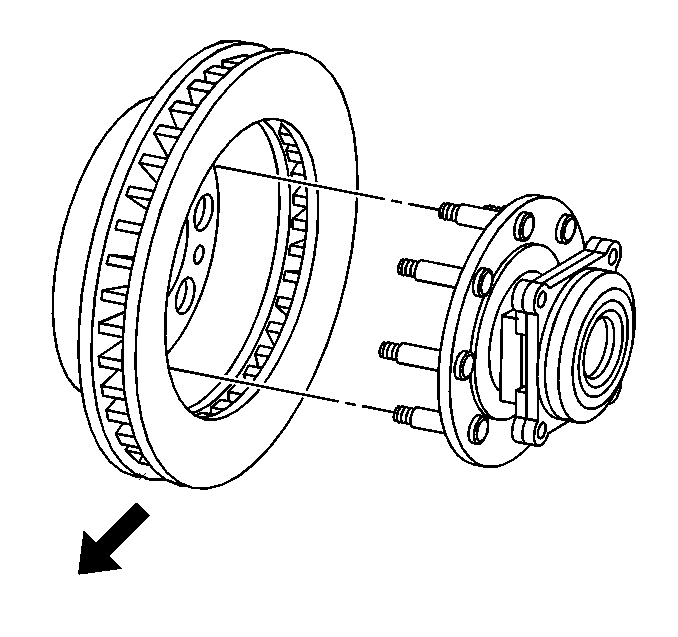Notice: Any new rotor must have the protective coating removed from the friction surfaces before being placed in service. Remove the protective coating using
denatured alcohol or an equivalent brake cleaner, and wipe the surface clean with clean cloths. Do not use gasoline, kerosene, or other oil base solvents which may leave an oily residue. This residue is damaging to the brake lining and is flammable.
Removal Procedure
- Remove 2/3 of the brake fluid from the master cylinder.
- Raise and support the vehicle. Refer to
Lifting and Jacking the Vehicle
in General Information.
- Remove the tire and wheel assembly. Refer to
Tire and Wheel Removal and Installation
in Tires and Wheels.
- Remove the caliper and mounting bracket as an assembly. Refer to
Front Disc Brake Pads Replacement
.
- Hang the caliper and the mounting bracket assembly from the suspension using mechanics wire.

- Remove the rotor.
- If the rotor is difficult to remove due to corrosion in the hub area use the following procedure to remove the rotor (25 series only).
| • | Clean all the surface areas and the threaded holes of contamination. |
| • | Generously apply penetrating oil or the equivalent to the hub/rotor area. |
| • | Insert (2) M10 x 1.5 bolts (jack screws) into the threaded holes of the rotor. |
| • | Tighten both bolts evenly to force the rotor from the hub. |
Installation Procedure
- Clean all rust and contaminants from the both side of the rotor and the hub flange.
Important: If the rotor was removed using the jack screw method you must ensure that the hub flange is free of nicks or marks caused by this procedure. Remove all raised nicks or marks before installing the rotor.

- Install the rotor.
- Install the caliper and the mounting bracket as an assembly. Refer to
Front Disc Brake Pads Replacement
.
- Install the tire and wheel assembly. Refer to
Tire and Wheel Removal and Installation
in Tires and Wheels.
- Remove the safety stands.
- Lower the vehicle.


